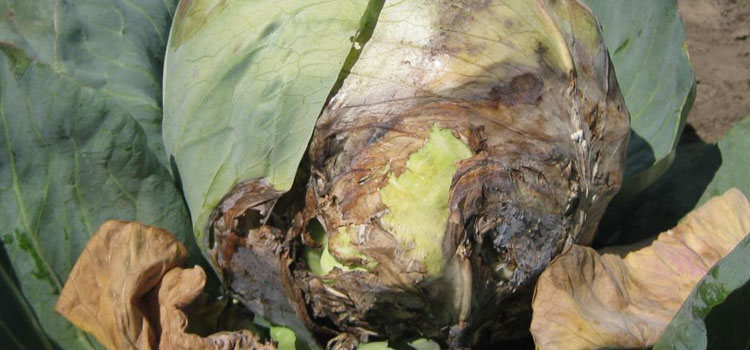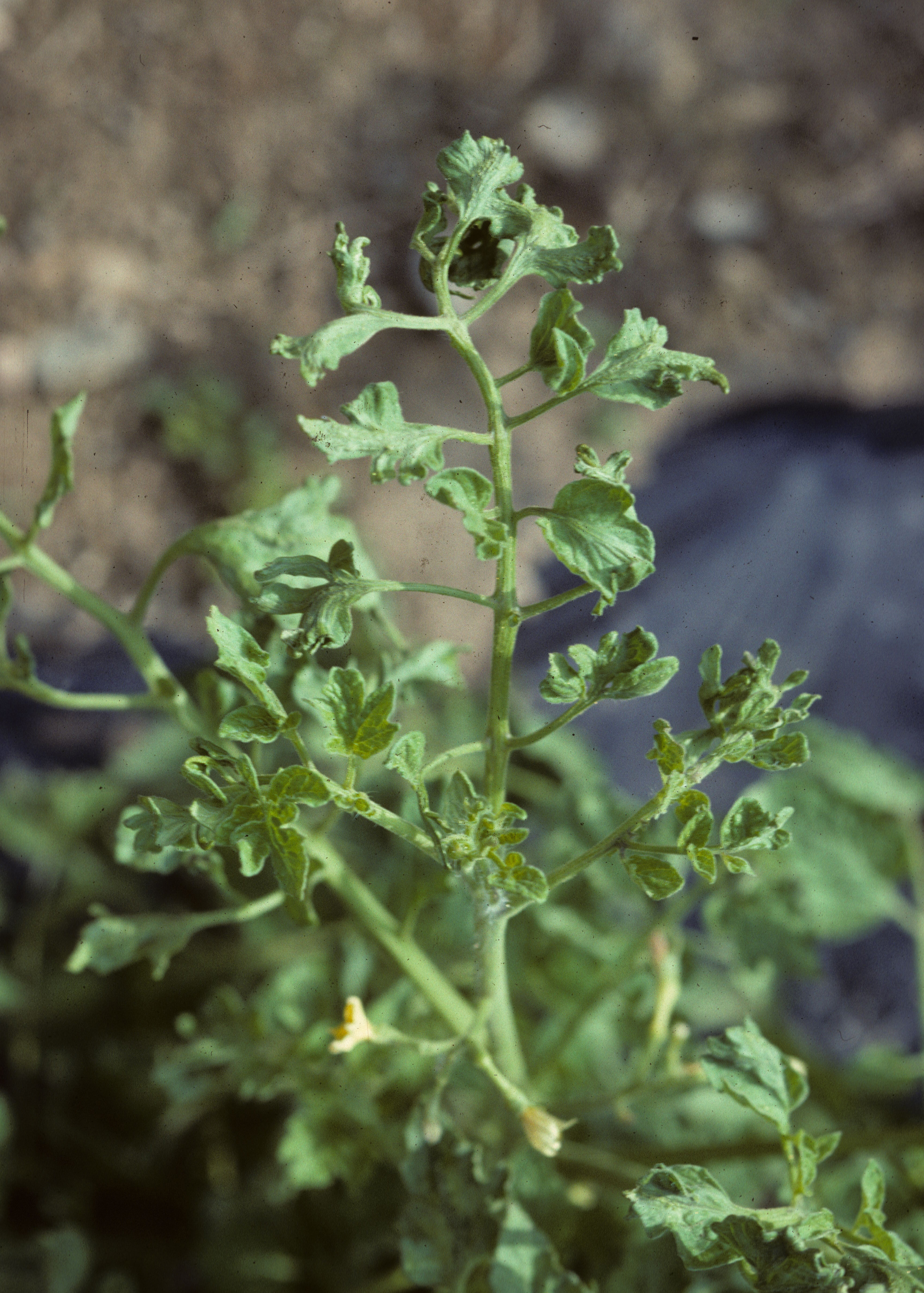In the last post in this series I discussed some common insect pests that could affect your garden. You might have come away from that post thinking “wow there’s a lot of things to worry about when trying to grow a garden”. Unfortunately, I have some bad news for you: Insects are often only half the issues you’ll face, and some of the most devasting problems will arise from pathogens you can’t even see. Just like people, plants can get sick too, so today we’ll be going over some of the common plant diseases and ways to prevent them.
Categories of Plant Disease
There are three main types of pathogens that can cause disease in plants: bacteria, funguses and viruses. Because of this, we we’ll be discussing each group separately below
Bacterial Diseases:
- Bacterial Soft Rot

- Image 1
- One of my personal least favorite diseases, bacterial soft rot is found mainly in brassicas (cabbage, kale, broccoli, etc.) but can also sometimes affect lettuce and other crops. Soil borne bacteria make their way into openings in the plant stem, usually the cuts left when harvesting.
- Controlling this disease is very difficult once it gets established, so removing and burning the crop as soon as it is noticed is often the best option. Under no circumstances should a home gardener compost a plant with this disease, because the bacteria will persist in the compost.
- Not growing cabbage crops in the same location each year will also help to control this disease. This is known as crop rotation and is generally good practice for a number of reasons. If you often deal with this disease, certain varieties are more resistant to it, and growing them in early spring and late fall can also improve your odds since the bacteria is most active in warm weather.
- Bacterial Leaf Spot
- Image 2
- A common threat to solanaceous (pepper/tomato family) crops in the eastern US is bacterial leaf spot
- This bacteria survives on plant debris and seed material and thrives in warm and wet conditions. Left untreated it can be very detrimental to the crop, defoliating plants and deforming fruit.
- Best prevention practices include buying certified disease-free seeds, watering in the early morning so the leaves don’t stay wet, and never saving seeds from infected plants
- Infected material can be composted as long as the compost is left to age until the plant material is entirely broken down, because the bacteria will be broken down by soil microorganisms once its host material is gone.
- Copper sprays can be effective treatment methods if the disease is caught in early stages
Fungal Diseases:
- Powdery Mildew
- Image 3
- Perhaps the most common disease for plants in the squash family (cucumbers, pumpkins, zucchini, etc.) is powdery mildew
- This fungal disease appears as white spots of powder on the leaves of the plants. Left untreated it will slow down the plants growth and production and eventually kill them
- Trimming diseased leaves, not touching diseased plants before healthy plants, and crop rotation are all good methods to prevent this disease
- Copper sprays are also useful for controlling the disease once it (inevitably) arrives
- Late Blight

- Image 4
- The fungal disease known as late blight is actual the same disease which caused the infamous Irish Potato Famine. Much like the other diseases, it can be carried in plant material, but is particularly difficult to control because it can also be soil borne or even airborne. It is mostly known for its effect on potatoes and tomatoes
- Late blight causes lesions on the stem and leaves of plants, as well as rotting the fruit or tubers.
Viral Diseases:
- Tobacco Mosaic Virus


- Image 5/6
- Tobacco Mosaic Virus or TMV is one of the most common and persistent viral diseases. It’s spread through sap transmission between plants (usually contaminated tools) and is known for its effects on tomato, eggplant, pepper and potato crops.
- It causes light green mottling patterns on foliage (mosaic) and lesions and rot on the fruit
- The best method of control for this disease is prevention through crop rotation, frequently disinfecting harvesting equipment and immediately destroying infected plants
- Once a plant is infected with this disease, it cannot be saved as there are no sprays or treatments that can stop TMV.
As always, consulting local extension offices is the best path for identifying the disease you’re dealing with, but as a general rule of thumb, destroying diseased material at the end of the season, practicing crop rotation, and maintaining clean equipment are all good ways to prevent most crop diseases in general.


The images you included in the post were very informative, it was very helpful that you identified which plants and crops are the main targets of which diseases. I didn’t know that gardening equipment needed to be cleaned, it was interesting to read.